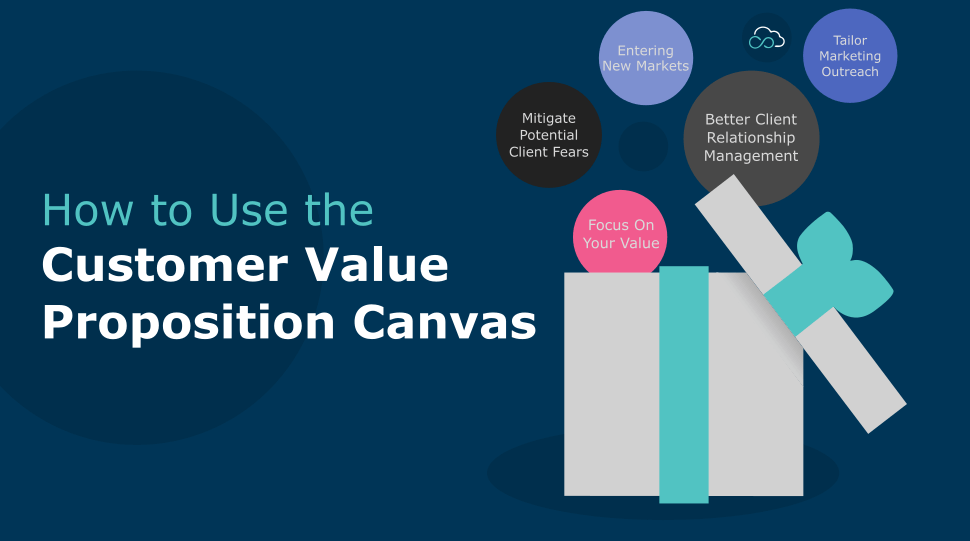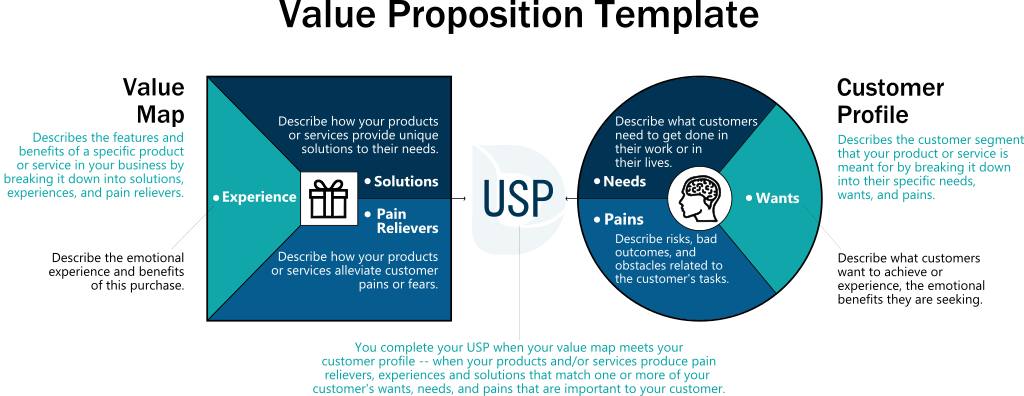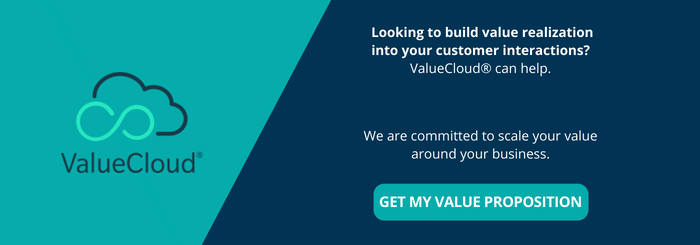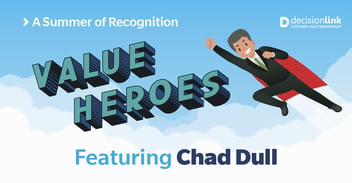Deep Dive into the Customer Value Proposition Canvas and Understanding the Value Map

Having a clear, well-defined and unique value proposition is essential for standing out in a competitive market. However, simply understanding the concept is not enough to create one for your business.
To effectively connect with customers, it helps to use a customer value proposition canvas. This tool melds two visualization tools — the value map and the customer profile — to help you identify the factors that make your business unique and prioritize the customer needs that you can fulfill. By doing so, you can concentrate on developing and marketing products and services that effectively solve customer needs.
A value proposition canvas is a useful tool for assessing customer needs, which can be complex and sometimes contradictory. With a value proposition canvas, you can identify and prioritize the needs you can fulfill, giving focus to the most important aspects of product development, marketing, and branding.
This article will guide you through the process of creating your own value proposition canvas. This will help you identify your unique value and use it to create value for your clients. By following these steps, you can better connect with your customers and build a successful business that delivers meaningful value.
What Is a Customer Value Proposition Canvas?
A customer value proposition canvas is a tool you can use to visualize the features and benefits of your product as they relate to your customer’s concerns. The value proposition canvas consists of two overlapping tools:
The Value Map
A value map is a tool used in business and marketing to analyze and visualize the various components of a product or service that create value for customers. It is often used as part of a value proposition development process to help companies identify and prioritize the key benefits they offer customers.
A value map typically includes three main elements:
- Customer Experience. Describes how the customer will experience the product or service on an emotional level.
- Solutions. Describes the ways in which the product or service offers unique solutions to customer problems.
- Pain Relievers. Describes the ways in which the product or service alleviates fears and pain points the customer might have.
By mapping out these elements, companies can better understand how their product or service creates value for customers, and can identify areas for improvement or opportunities to differentiate themselves from competitors.
Value maps can also help companies more effectively communicate to customers their value proposition and align their sales and marketing efforts around the key value drivers for their product or service.
Finally, value maps help companies think about the relationship between value and price. You can start to break your value offering down to its component parts and think of a concrete dollar value to assign to that offering. This is how you can be sure, for example, that you are offering “$1,000 value” for a $100 product.
The Customer Profile
A customer profile is the description of a typical customer or target audience for a business or product. It includes information about the customer's demographics, such as age, gender, location, education level, occupation, and income, as well as their psychographic traits, such as interests, values, attitudes, and behaviors.
A customer profile may also include information about the customer's buying habits, such as their preferred channels for purchasing products, their decision-making process, and their reasons for choosing one product over another.
Customer profiles have three core components:
- Wants — specific desires or aspirations customers have for a product or service. Wants may not be essential for survival but are often driven by personal preferences, lifestyle, or cultural values. For example, a customer may need a car to commute to work, but they want a car with a specific color, style, or feature.
- Needs — the fundamental requirements or problems customers need to satisfy or solve. Needs are often universal and timeless, such as the need for food, shelter, safety, and social interaction.
- Pain Points — specific problems, frustrations, or challenges customers experience when using a product or service. These are areas where customers feel dissatisfied, disappointed, or frustrated. They could include issues such as poor customer service, product quality, high prices, inconvenient location, or difficulty in using a product.
By creating a customer profile, businesses can better understand their customers' needs and preferences, tailor their marketing messages and products to specific segments, and improve their overall customer experience.
A Quick Brush-Up On “Value Selling”
"Value selling" is a sales strategy where the focus is on demonstrating the unique value a product or service can offer to a customer, rather than just emphasizing its features or price. The goal of value selling is to help customers understand the benefits and advantages of a product or service and to show how it can solve their specific problems or meet their specific needs.
Value selling involves a deep understanding of the customer's business and their specific challenges, as well as a thorough knowledge of the product or service being sold. This enables the salesperson to tailor their approach to the customer's needs and to present the product or service in a way that resonates with the customer.
Value selling is typically a consultative sales process that involves building a relationship with the customer, understanding their pain points and goals, and then demonstrating how the product or service can help them achieve those goals or solve their problems. By focusing on value rather than just price, value selling can often result in more successful sales, stronger customer relationships, and higher customer satisfaction.
How to Create a Value Proposition Canvas
Your unique value proposition results from where the two visualizations described above (the Value Map and the Customer Profile) overlap. When you have identified how your product or service alleviates customer pain and meets their wants and needs, use that overlap to create your value proposition.
This insight lets you improve every part of your business, from sales and marketing to client relationship management. It gives you a better understanding of your customers so you can engage them and keep offering relevant helpful solutions.
Create your canvas to help you better understand your customers’ needs and develop a foundation for value selling.
Start With Your Value Map
Companies are usually closer to the product than they are to the customer. This gap will need to be bridged eventually but, for the time being, it makes sense to start with the value map.
Company stakeholders have probably already spent much time conceptualizing the product or service. The point of the value map is to get granular about the value offering of that product or service.
Divide your value map into three sections:
Experience
Describe the experience of the customer from start to finish — from when they first become aware of the brand, through the process of information-gathering and contemplation, to the first purchase, all the way through to the last purchase.
Now assign “emotion words” to each stage of the experience. What are your prospects or customers feeling at each stage? What do you want them to feel?
Solutions
Break down your product or service to its component parts — every feature and benefit. Make sure to think about the benefits several layers deep — not just what it does, but what it means to the prospective customer. Try to focus on unique solutions to major problems.
Pain Relievers
Write an exhaustive list of the fears and pain points your product or service is capable of solving. Look for many more “emotion words.”
Then Create Your Customer Profile
You might have customers whose wants and needs are different; some maybe even conflict with one another. Create your customer profile using your most significant customers or look for similarities among your consumers.
First, identify their pains. Identify the common solutions your product provides for each of its customers. Even if your top customers work in competitive industries, it is still likely that issues consistently plague all of them. Figure out these needs. Ask these or similar questions:
- How does your product offer solutions to common customer problems?
- What challenges are your customers facing?
- How have your competitors’ products not met customers’ needs?
When creating your customer value proposition (CVP) map, identify as many pain points as you can. Make a separate column for those that affect most of your customers to help set your priorities.
Next, define your clients’ wants. When your customers are businesses, you might be tempted to overlook emotional wants. Although you won’t focus on emotional needs like a sense of belonging or appealing to safety, you can focus on others, including trust and confidence. If your product allows your clients to serve their customers better, it can help them meet these emotional wants.
Questions that can help you identify your customers’ wants include:
- What emotional needs does your product fulfill?
- How does your client use your products in their job?
- How does your product make life easier for your clients?
Finally, assess your customers’ needs. Identify how your product lets your clients’ employees do their jobs better. Perhaps your software as a service (SaaS) platform enables your customers’ employees to communicate more effectively and simplifies their daily responsibilities. In this case, you could identify productivity as one of your customers’ primary needs.
Questions that can help identify your customers’ needs include:
- What does your customer expect from your product?
- How do you meet and exceed these expectations?
- What benefits does your customer experience from your product?
If you’re planning on using your CVP map to focus on value marketing, you can make more than one canvas to help create targeted messages. You might have some clients who use certain features of your product more frequently than others. Create multiple customer profiles to identify universal pain points and others you can use to create targeted ads and content.
Combining Your Value Map and Customer Profile into a Unique Value Proposition
Now you have two powerful visualizations. It’s time to bring them together like a Venn diagram. On the side of the value map — a list of intellectual and emotional triggers. On the side of the customer profile — a list of intellectual and emotional wants and needs.
Now you can start connecting dots. Start by connecting elements of the value map with elements of the customer profile. For each connection you make, write a sentence that addresses a feature, benefit, or experience on the value map as a solution or pain-alleviator to a specific want, need, or pain point on the customer profile.
From these sentences, you can begin to formulate a unique value proposition — a graceful marriage of the value you offer through your product or service (from the value map) with the needs and desires of your ideal customer.
Massage your unique value proposition into a coherent statement, and voila — your value proposition canvas is complete! You can immediately start putting it to use in your branding, messaging, and customer relationship management.
 How to Use The Value Proposition Canvas
How to Use The Value Proposition Canvas
Your value proposition canvas will help you identify your specific competitive advantage, which you can use to create your unique value proposition. This will help you more accurately differentiate yourself from competitors in branding and advertising.
It is also a key component of customer value management. This tool lets you:
- Clearly communicate your value throughout a customer’s time with you from discovery to the final sale.
- Identify every stage of your customer’s journey from marketing to client relationship management.
Not only can you tailor your marketing messaging to focus on clear benefits, but you can also regularly check with customers to refine your products to further meet their needs. Here are some ways you can use your customer value proposition map.
Focus On Your Value
Throughout your daily responsibilities, it is easy to lose focus on your company’s value. You might be tempted to develop new products or add new features without determining how they add to your value.
Developing a value proposition canvas gives you and your employees a guide for everything from marketing to research and development. When you know the value you provide to your customers, you can make sure any new products or features contribute to this value.
Tailor Marketing Outreach
You can use your unique value proposition to create marketing messages on all platforms. Whether you are focused on advertising, creating content, updating your website, or any other marketing function, you can highlight your distinctive place in the market.
Even in B2B marketing, buyers are constantly exposed to advertising; value selling helps you stand out. Selling your product or service on its potential merits means you are more likely to pull customers into your business.
A customer value proposition canvas also lets you target your outreach. You can use your insights to create different messages for different customer segments. When creating your customer profile, highlight different wants and needs you can use to create marketing messages that appeal to these segments.
Better Client Relationship Management
When you truly know how your product provides client solutions, you can better interact with your clients throughout the relationship. You can solicit feedback to see how your products are working to solve customer pain points and develop modifications or new products that can help better meet these needs.
Value-based client relationship management is more engaging and can lead to greater customer satisfaction. When your clients feel heard, they are more likely to trust you than if you just came in with an aggressive sales pitch.
Mitigate Potential Client Fears
Fear of change is a common barrier to landing a sale. Using a CVP map and canvas gives you and your sales team a better understanding of potential benefits.
When your value proposition canvas is based on real results and metrics, your sales team has a stronger point from which to pitch. They can more easily anticipate potential objections and answer questions in the initial sales presentation. By allowing the sales team to set realistic expectations, your prospects might be less resistant to change and more willing to try something that will provide tangible benefits.
Entering New Markets
If you are planning to enter a new market or target new customers with your existing products, a value proposition canvas can help you assess which ones to target. Since you already have an idea of your product’s benefits from your value map, you can create new customer profiles based on the new market.
This exercise gives you a better sense of potential success in a new market. You can use it to identify solutions you can offer. You can also use it to eliminate potential markets. When developing your value proposition canvas, you might find that your offering is not as strong as those of existing competitors. In this instance, you might decide not to enter that market or to tweak your products so they are more competitive.
Getting Started On Your Value Proposition Canvas
Understanding your company’s benefits helps you streamline every part of your business, from sales to product development. It lets you cultivate deeper client relationships based on needs and solutions.
DecisionLink can help you with your value proposition canvas, giving you the tools you need to generate better leads, refine your marketing, and adjust your products. Contact us today if you’re ready to clarify your unique value to tailor your messaging and improve your revenue.

 ValueCloud
ValueCloud
.png?width=118&height=76&name=Rectangle%20(3).png) ValueCloud Ignite
ValueCloud Ignite
.png?width=92&height=92&name=Rectangle%20(4).png) Free Assessment
Free Assessment
.png?width=100&height=100&name=Rectangle%20(5).png) Watch a Demo
Watch a Demo
.png?width=82&height=96&name=Rectangle%20(6).png) Value Calculator
Value Calculator

.png?width=62&height=51&name=Group%2010%20(1).png) Marketing
Marketing
 Sales
Sales
 Customer Success
Customer Success
 Engage Prospects
Engage Prospects
 Win Deals Faster
Win Deals Faster
 Retain Customers
Retain Customers
.png?width=62&height=62&name=Rectangle%20(8).png) Adopt and Scale
Adopt and Scale
.png?width=54&height=54&name=Rectangle%20(9).png) Cybersecurity
Cybersecurity
 Healthcare
Healthcare
.png?width=54&height=54&name=Rectangle%20(10).png) IT & Software
IT & Software





